The Assault Bike – we all hate it (except for a select few crazies out there). Why? Because it hurts! The harder you push, the harder it resists. And, when you’re tired, it feels like you get nowhere fast, and it takes FOR-EV-ER for the calories to tick up. So, this week’s topic: how to hack the Assault Bike.

Like the PM5 Monitor on a rower, the Assault Bike monitor contains all the information you need. The two numbers you need to pay attention to are RPM and Watts. They are perfectly linked – each RPM corresponds to a discrete wattage value, as shown below.
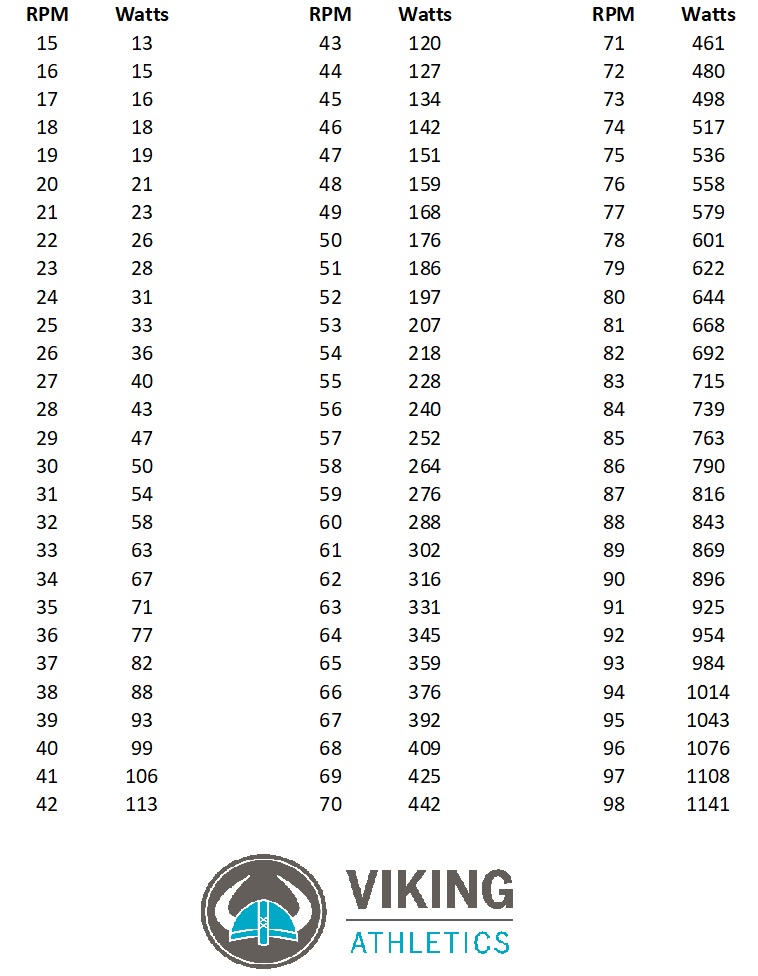
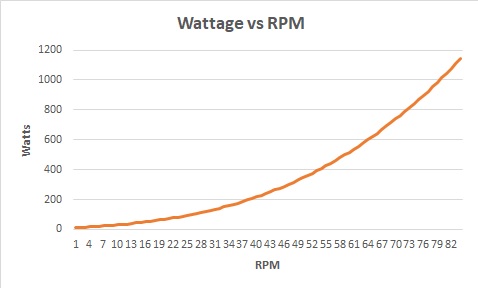
As you can see above, when we graph this, you generate exponentially more wattage as you increase RPM. Why do we care about this? Watts are a unit of power. Power is equal to work/time, and work is a measure of energy. Calories are also a unit of energy. If we set our time to 1 minute, there is a linear relationship between wattage and calories which you can see below. Our below cals/min are based on experimental evidence, and the trendline suggests that if you have a constant wattage for 1 minute, you can multiply that by 0.0404 and you’ll have your calories.
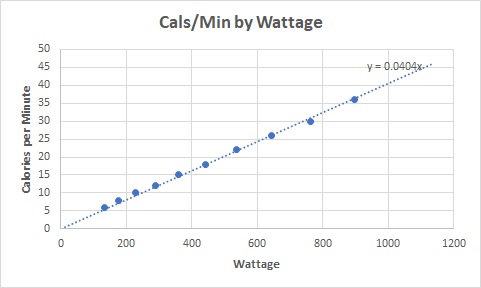
If RPM and wattage are exponentially related, and wattage and calories are linearly related, we know that calories are exponentially related to RPM, as shown below.
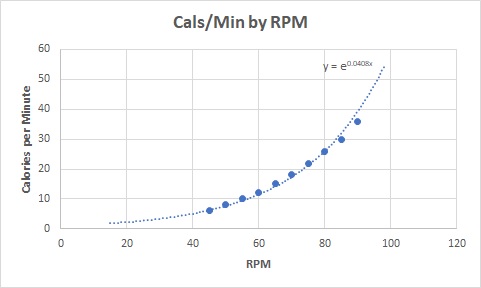
Finally, using the above trendline, we can determine how long it will take you to bike a certain number of calories based on your RPM. We want time in seconds, so after converting seconds to minutes and doing some algebra, we end with the equation Time(in seconds) = 60*Calories / e(.0408*RPM). To spare you a graphing calculator, below is a table with how long it will take to bike a certain number of calories based on RPM. The left column is RPM, the top row is calories, and the resulting numbers in the table are the seconds it would take to bike those calories at the given RPM. based on the inputs. Keep in mind, it takes time to build up to a certain RPM, so the chart won’t be perfect. But, it will give you a solid approximation. If you can hit 100 RPM and hold it for 10 seconds, you should be at right about 10 calories, as shown in the table.
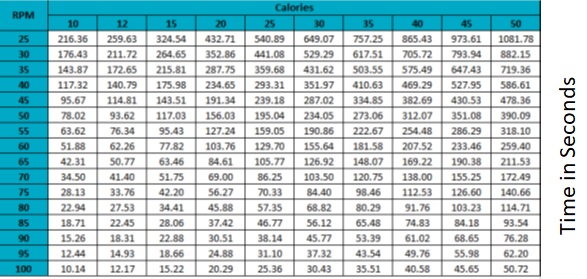
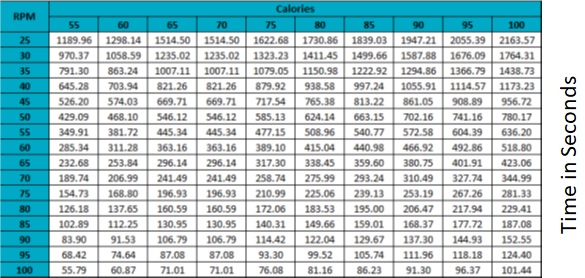
What does this all mean? It means that when we bike for calories, it would behoove you to maintain a higher RPM. When we row, the return on investment to get a faster time per distance is usually not worth it. We expend a ton more energy to save a few seconds, but we’re likely forced to rest or slowdown at a later part of the workout, and the net effect is that we lose time. Given the exponential relationship between RPM and calories on the bike, if we can pedal a little bit harder without overdoing it, we can save some serious time.
Also, knowing roughly how long it will take to bike a certain number of calories at a given RPM can help us manage our expectations in a biking WOD. Expectation management is a HUGE factor when it comes to mental toughness. One of the main reasons we get demoralized in workouts is that our heart rates spike faster than expected. On the bike, it’s also demoralizing when we feel like the calories just aren’t ticking up. Use this information if you like, and it can hep you manage your expectations and strategize your workouts. See you in the gym.
Not a member but interested in joining? Click here to book a free “No-Sweat” intro!
